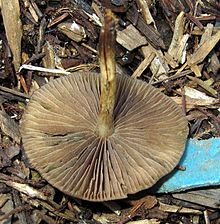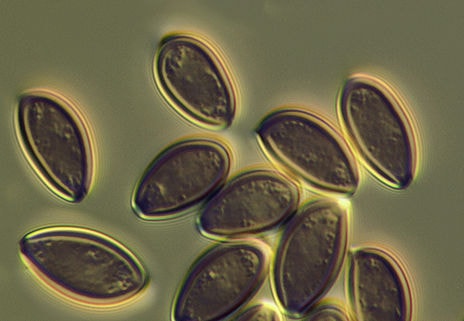Discovering The Psilocybe Allenii
Officially identified in 2012, it takes its name from John W. Allen, the ethnomycologist who supplied the type collection. (A ‘type’ in biological terms is the definitive version of a specimen from which others can be compared and identified.) Despite its only recent ‘official’ recognition, it has long been a favourite of foragers in places such as San Francisco, even earning itself the pseudo-latin title Psilocybe cyanofriscosa — which it is still known as on some mycological message boards.
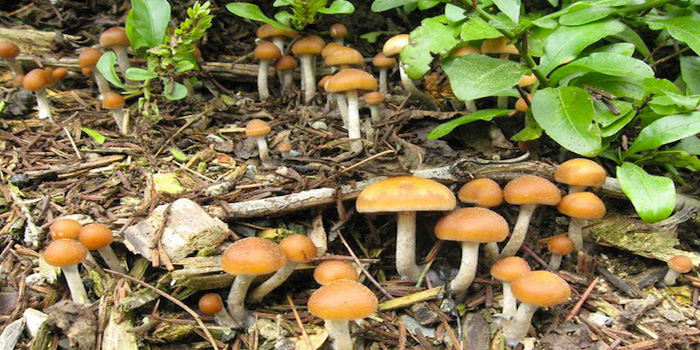
Its desirable medium-to-high potency, and relative availability in the wild, led American mycologist Alan Rockefeller to remark;
“If you go to Golden Gate Park in December you will see hundreds of hippies looking at the wood chip landscaping for Psilocybe cyanescens and Psilocybe allenii.”
Where and When?
The P. allenii is native to the Pacific Northwest of America, from San Diago all the way to British Columbia, Canada. Specimens are generally found within 16km of the Pacific Coast. Their preferred habitat is wooden debris, meaning that they have thrived in areas that feature commercial wood chips. Thus, they are not uncommon in urban areas! They will also happily grow in grain, agar and sawdust — the P. allenii is an adaptable shroom just desperate to sprout, by all accounts. This sprouting tends to happen in the colder months of the year in its native land, that being September to January. (Hence the hippie’s festive foraging in December!)
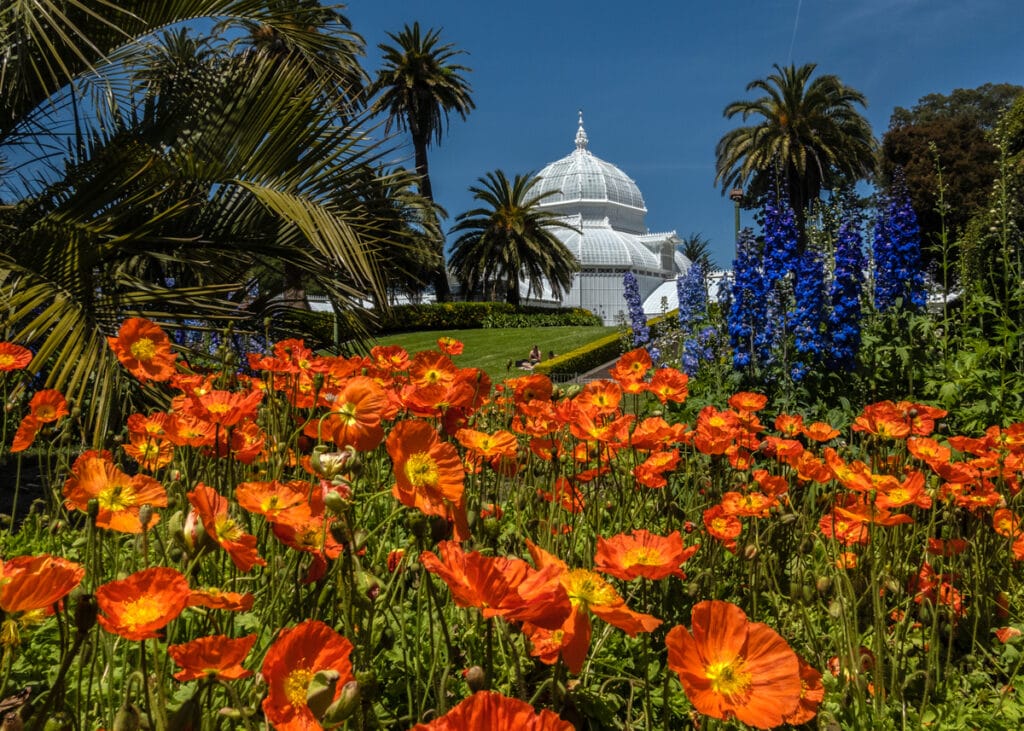
Look-Alikes
The curse of a doppelganger is what actually kept P. allenii from being scientifically categorised for so long. It was confused, for many years, with the Psilocybe cyanescens. They grow in similar areas, with similar psychedelic potency and a very, very similar appearance — the one difference being P. allenii’s lack of a wavy cap — a common characteristic of the P. cyanescens. The definite distinction was found only with DNA sequencing. This, along with lack of wavy cap, showed enough difference with the P. cyanescens to merit P. allenii being granted its own species status.
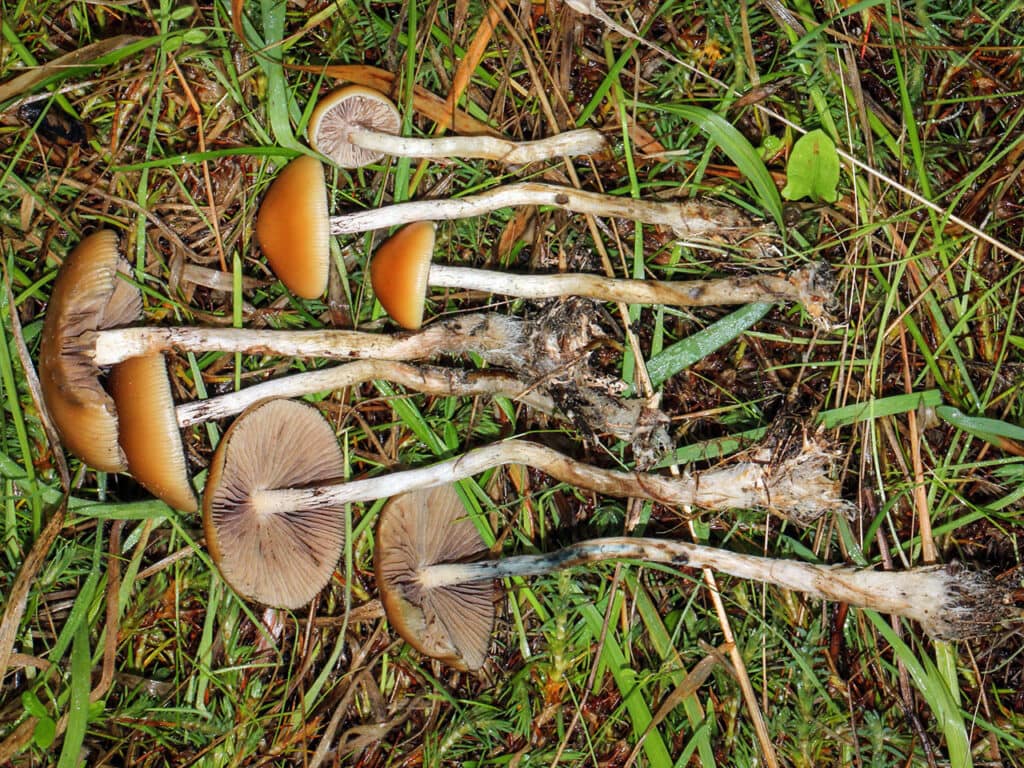
And, would you believe, that is not this newbie shroom’s only look-alike! P. allenii is also often mistaken for P. azurescens, P. serbica and P. subaeruginosa. All of these are psychedelic, containing the compounds psilocybin and psilocin. However, as they vary in potency and safety it is better not to take a risk if you’re not sure…(this is why we recommend our magic mushroom grow kits!)
Vital Stats: How To Spot This Shroom!
To identify a Psilocybe allenii, check out the following:
Cap: The cap is generally in the ranges of convex and flattened. Sometimes it has a dip in the centre. The edges of the cap are generally straight but occasionally can be curved. This shroom can get quite large— and, depending on its substrate — the cap can grow up to 9cm in diameter! The cap is covered with a pellicle (a filmy layer) which makes this mushroom slippery when wet and sometimes and hard to harvest. The colour also depends on moisture, as P. allenii is hygrophanous. This means that when dry, the caps are yellowy-beige, and when moist they are a cinnamon brown.
Gills: The gills of P. allenii are pale grey-brown when young, maturing to a deep purple once the spores mature.
Spores: The spore print of P. allenii is dark brown, occasionally with purplish hues. The spores are thick walled in a rough oval shape.
Stem: (or stipe) is between 3 – 7cm tall and 0.1 – 0.3cm thick. It is cylindrical in shape, hollow, and smooth to the touch. In colour, it starts as white, but develops a yellowish tinge with age. When handled it will stain blue (due to its psilocybin content). The top of the stem is sprinkled with white powdery specks (this is known as ‘pruinose’), and the base is attached to chunky, white rhizomorphs (root-like structures).
Taste and Smell: The taste and smell of the Psilocybe allenii is described as farinaceous which means ‘containing starch’. Apparently similar to freshly ground flour.
Further Identification
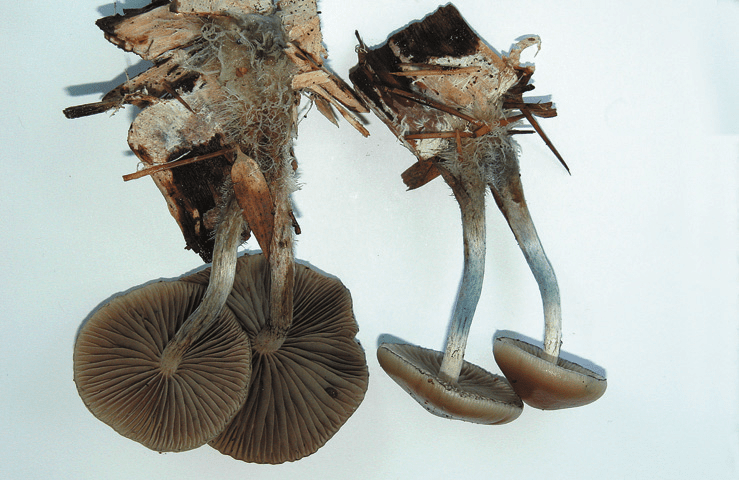
Can I eat it? : It is edible, but hallucinogenic. Proceed with caution.
Find it: Pacific Northwest of America, growing on wooden debris, wood chips, sawdust or similar.
When: Between September and January.
Family: Hymenogastraceae
Genus: Psilocybe
Species: allenii


